The Telecaster was originally designed as a budget guitar that could bridge the gap between affordability and performance, but this iconic single-cut guitar remains one of the most iconic and popular body shapes around to this day.
The problem is that as the Telecaster’s popularity increased, Fender bumped it up into the ranks of their premium models, making it pretty expensive and largely inaccessible to anyone on a tighter budget.
Sure, Fender’s subsidiary company Squier does make some great affordable Telecaster-style instruments such as the Sonic Esquire Tele which retails for a measly $200.
But the real magic lies in the non-Fender Tele’s. Other companies have found cool and interesting ways to play with the T-guitar formula outside of the creative constraints that Fender are obliged to adhere to.
Particularly some of the cheap $100-$120 Tele copies offer incredible value for money that you simply won't find from the big brands.
Top 3 - Non-Fender Telecasters
Preview | Product | Price |
|---|---|---|
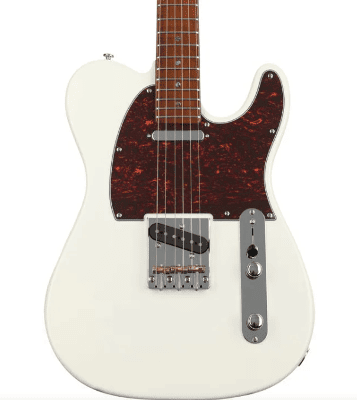 | ||
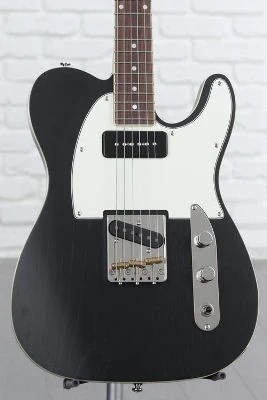 | ||
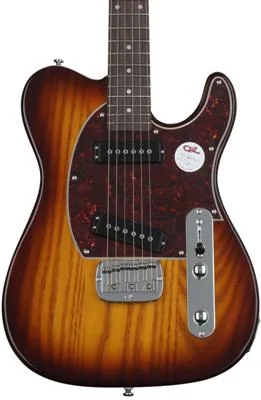 |
So after extensive searching and testing, I’ve put together a list of 8 of the very best non-Fender branded Telecaster style guitars that fit a range of budgets, each offering a unique twist on the traditional T-formula.
8 Best Non-Fender Telecaster Guitars
1. Sire Larry Carlton T7
Despite being a signature model guitar, the Larry Carlton T7 Signature Telecaster is a worthy consideration regardless of whether you’re a fan of Larry or not because it has such a neutral and understated look. This guitar is appropriate for anyone, not just Carlton fans.
While the design stays true to the Telecaster formula, using the same single-coil and lipstick pickup configuration combined with the flat control plate, the headstock has been adjusted slightly and looks far sleeker than the regular Fender headstock.
I really like the darker roasted hard maple neck, not only is it going to be supremely stable as the roasting process removes all of the moisture and oils from the wood, the darker caramel color gives it a luxurious and rich appearance.
Making things even better are the abalone dot inlays which blend into the fingerboard making them understated from a distance, but still functional when you’re up close.
Both the bridge and neck pickups are Sire’s own LC Super-T Single-coils, which have no problems nailing the signature Telecaster twang. But I found they still grit up nicely without introducing those nasty overtones like some of the very old Tele-pickups would.
These are more functional for the modern musician, without giving up the core spirit of the Telecaster sound.
The T7 is available in a number of colors (the Tobacco Burst is my favorite) and is a little bit cheaper than the Fender Player series making it a good value mid-tier consideration.
2. Schecter PT Special
You might be surprised to see a Schecter make this list as they are most often associated with making guitars geared for heavy metal music.
But don’t write them off just yet, the PT Special impressed me with how authentically it nailed the feel of a Telecaster, while still introducing a few unique quirks that give it its own personality too.
The PT stands for Peter Townshend who was the lead guitarist for legendary British rock band The Who.
The core philosophy of this guitar was to design a more muscular Telecaster that tonally produces much more hair, grit, and overtones thanks to the bright (and very light, be warned) swamp ash body which is paired with Schecter's own Diamond V-90 and VT-1 pickups.
The P-90 style neck pickup in particular impressed me with how thick and rich it sounds, it certainly contrasts the thin and twangy lipstick-style pickup you might find on a real Fender Tele.
The neck also feels more appropriate for the modern player thanks to its C profile and flatter 12” radius. It plays much more smoothly than a traditional 9.5” radius neck. So if you enjoy playing fast this is going to feel much nicer in the hands.
It comes in a number of colors/finishes, particularly the 3-tone Sunburst with maple fretboard looks exceptionally exquisite.
3. G&L Tribute ASAT Special
After selling Fender, Leo Fender himself went on to form G&L Guitars in the late ’70s with George Fullerton. This gives G&L guitars a unique authority when it comes to making (and breaking) the Telecaster formula.
While the G&L Tribute ASAT certainly does hit all the main beats you’d expect from a T-style guitar, it’s got a few of its own unique quirks that seem to surprise everyone who tries it.
Primarily the body wood which is a single piece of sassafras (don’t worry, I hadn’t heard of it either) which is a premium tonewood that aims to provide an even balance across the frequency spectrum.
Essentially removing a bit of the honky twang and leaning more into the bass and lower mids than what you’d expect from a traditional Tele.
This body wood is then combined with a hard maple neck which is both supremely stable and darkens the sound a little bit which further helps to warm up the tone of the instrument.
The pickups are G&L’s own Jumbo MFD Single-coils which sounded wonderfully rich and are very quiet and easy to keep under control, a welcome reprieve for anyone who’s dealt with buzzy and noisy true single-coil Tele pickups before.
Although these are technically single coils, they are soap bar pickups, so if you like to play around with aftermarket pickups you will be limited to soap bar spacing only.
I also found the rounded over bridge rim really comfortable on my hands, so if like me you’ve always had a problem with the comfort of the regular Tele ‘ashtray’ bridge plates, you’ll no doubt find these far nicer on the hands!
4. Charvel Pro-Mod So-Cal Style 2 24 2PT HH
The Telecaster has always had an association with vintage looks and tone, but over time there’s been a steady accumulation of guitars that aimed to modernize the design and essentially turn them into T-shaped super Strats.
Nothing encapsulates that concept better than the Charvel Pro-Mod So-Cal.
It’s got everything you’d expect from an ultra-modern guitar: dual humbucking pickups, a floating bridge style with adjustable saddles, a 3-way blade switch, and angled controls to fit the curvature of your arm swing.
This makes it an ideal choice for anyone who likes the visual style of a Telecaster but needs a cutting-edge modern instrument that can handle rock and metal tones.
The guitar takes on an all-black aesthetic with an open-pore matte black finish on its bright-sounding swamp ash body, the black pickguard and all-black hardware make this thing look like a sleek rock machine.
It has a 12”-16” compound radius neck meaning you’ll get much lower action than on a traditional Telecaster which helps accommodate faster playing for shredding and solos.
But the real star of the show here are the Fishman Fluence Open Core Classic pickups which have 2 distinct voices you can activate by hitting the mini toggle switch situated between the tone and volume controls.
Between these two modes and the 3-way pickup selector, you’ve got access to 6 unique sounds making this possibly the most tonally versatile Tele I’ve ever played.
If you’re not much of a traditionalist and just want the single-cut shape, this is definitely one to check out!
5. ESP LTD TE-200
The ESP LTD TE-200 is a guitar that’s a little confused in its design philosophy. It seems to want to be a modernized Telecaster but has gone so far that it’s ended up adopting more of a full-on metal super Strat vibe that just happens to be single-cut.
Despite its unusual design ethos, there’s no denying its functionality and incredible price to performance. It certainly deserves a spot on this list!
On the more traditional side of things, you have a mahogany T-shaped body with a regular pickguard and traditional horizontal Telecaster control plate.
From there everything else sits firmly in the modern era with LTD’s fixed bridge, which is basically a hipshot bridge in all but name.
There are two of LTD’s own designed passive humbuckers which didn’t sound too great to me, but thanks to the pickup mounting rings you can easily replace them with aftermarket ones to improve the tone.
One design aspect I found myself unexpectedly falling in love with was the inlays. There's something about the mini-dots that are tucked away at the top of the fretboard which makes the guitar look sleek and modern. I'm a huge fan of them and wish more guitars utilized this!
Overall this would be a guitar a modern metal player might enjoy, but traditionalists may be bothered by some of the design choices.
6. Godin Radium
The Godin Radium is going to be a great choice for anyone who’s looking to see the Telecaster formula shaken up and wants something that stands out.
Despite its overall leaning towards the Tele design, you’ll see a lot of Les Paul influence here with its paddle-style headstock and bar-bridge design.
The Godin Radium has a solid basswood body that has been left unfinished, although it’s also available in a painted Matte green finish if you’re not keen on the natural wood look.
The body shape is technically from a Godin Stadium model which is their take on the Tele. It’s been adjusted quite a bit from the regular T-shape body to have a more pronounced top ridge where your arm rests which felt super comfortable to play, but also the actual single cut is contoured which gives it its own unique look.
Pickup wise it has two of Godin’s own custom Zebra humbuckers in the bridge and neck position, both of which sounded modern and punchy. The middle pickup has a Cajun Nickel Single-coil with a metal cover that matches the silver bridge and control plate.
While there’s only a 3-way toggle switch you do have a push/pull switch on the tone knob which coil splits the humbuckers to allow you to achieve a huge range of tones.
If you like the idea of playing both a Les Paul and a Telecaster at the same time, this is going to be perfect for you.
7. Monoprice Indio Series
Did you know that Monoprice made instruments? I didn’t until I got my hands on this thing, and it’s not half bad!
Now the first thing to establish is that this is designed as an absolute beginner's guitar and the price very much reflects this. With this price and target audience in mind, I was very impressed despite the obvious issues you might expect to deal with on a cheap guitar.
The Monoprice Indio Series is trying to essentially nail the Telecaster for as cheap as possible, with no extra frills and gimmicks.
All the traditional colors you’d want from a Tele are there. There’s also a good selection of maple or rosewood fretboard options depending on your preference.
It hits all the main beats of a Tele, angled single coil in the bridge with a lipstick-style pickup in the neck, flat control panel with volume, tone, and a 3-way toggle switch. It even comes with a gig bag.
Obviously, the tone isn’t great, and it struggled to stay in tune when left alone meaning it needed to be tuned every time I picked it up. But you could also just see this as an opportunity for a beginner to put in a lot of practice tuning the guitar which isn’t a bad thing!
This is probably the single most affordable path to getting a Telecaster clone available and can work great as someone's first guitar or as a project instrument where you can make some aftermarket upgrades.
8. LyxPro 39” Electric Telecaster Guitar
Another guitar that’s really designed to be an absolute beginner's instrument.
Once again the LyxPro 39” does a good job of hitting all the main beats of a Telecaster. But it has its own unique headstock design and I like the fact they have left it unfinished so it still fits in with that more vintage aesthetic you’d associate with the Telecaster.
The pickups seem to be LyxPro’s own design or some brandless imports. They don’t sound great. If your only concern is with a nice, glassy clean tone then they are adequate, but if you wish to use any kind of distortion there’s lots of residual noise and nasty overtones.
I highly recommend exchanging these with aftermarket pickups.
The body is made of Paulownia which both looks good and resonates nicely, the weight is ideal and it doesn’t come off feeling cheap at all.
Obviously, these are cheaply produced guitars, and as such the body is usually a mishmash of various cuts which have been glued together. When more premium brands do this they’ll often spend a lot of time matching the different cuts of wood, but on the one I tried there had clearly been no effort put into matching the body woodcuts, the grain was quite literally running in two directions.
While this doesn’t affect its functionality, if aesthetics are important to you this should be considered a high-risk purchase as you have no way of knowing what kind of wood grain you’re getting.
If possible, try to ask for pictures before making a purchase. But oftentimes these are shipped from storage warehouses so you won’t get the option to choose the exact one you want.
How Much Should I Spend on a Telecaster?

One of the biggest questions buyers have when picking out their next guitar purchase is how much they should spend.
Some top-end Telecaster-style guitars can cost thousands of dollars, while there are other mass-produced ones that only cost a few hundred, it’s easy to fall into the trap of thinking that just because a guitar is cheaper it must be no good.
To fully understand where the value lies in guitars you have to understand the price to performance curve and how strongly diminishing returns sets in once you go above the $1,000 mark.
While ultimately value is relative and subjective, I have some general guidelines I can offer which can help organize guitar price points to help you better understand when you’re paying for an objective performance increase, and where the price is factoring in brand name and heritage.
Generally speaking guitars from the $100-$600 range are considered beginner guitars. These will often be produced using cheaper materials en masse to keep prices as low as possible.
But it’s important to note that guitar manufacturing and QA checks these days are pretty darn good, and these cheaper guitars will still play perfectly fine. More advanced players who want the most comfortable neck, nicer sounding pickups, and better construction for tuning stability might want to consider a more expensive guitar.
Anywhere from $600-$1,200 is really where you’re getting the most bang for your buck. They’ll be better built, use nicer woods and hardware and will just generally sound and feel better to play. They’ll be perfectly adequate for any professional musician.
Once you head above $1,200 you start to get into premium instrument territory. This is where you will see substantial diminishing returns in the price to performance. A $3,000 guitar isn’t going to feel or play that much better than a $1,200 guitar.
So why do people buy premium guitars?
Simply put, it’s because they love guitars. Having a premium guitar with a special finish, fancy woods, and is handmade by a well-respected luthier can be worth a lot to someone who is passionate about the instrument.
Ultimately there is no right or wrong price point for guitars, they are there to accommodate the needs of different buying markets. So by identifying what your needs are, you can ensure you’re only spending what you need to without being lured into paying extra for an instrument that’s not providing any tangible benefit.
What Makes the Telecaster So Good?
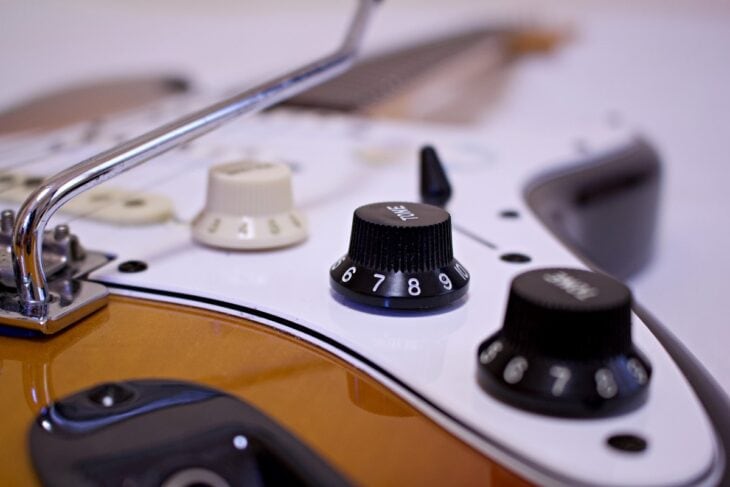
The Telecaster was designed to be a simple, no-frills budget guitar that was affordable while still sounding and playing good enough to be used by any working professional musician.
It’s this simplicity that has kept the T-style guitar popular for so long.
Telecaster offered a far easier playing experience with a far simpler 3-way toggle and single volume/tone knob setup when compared to the Stratocaster's 5-way toggle switches or a Les Pauls's complicated control setup.
There’s always been a demographic of guitarists who value this no-nonsense approach to guitar.
While over the years companies have flirted and experimented with this formula to include strange and unusual configurations and designs, ultimately it’s this traditional Telecaster philosophy of simplicity that keeps bringing people back.
Are Tele-style Guitars as Good as Real Fenders?

Branding and FOMO are big players in the guitar space. So with the original Telecaster being designed and manufactured by Fender, there’s a very natural pull for buyers to want to buy an official Fender Telecaster.
But Fender shouldn’t be put up on a pedestal here, all the big guitar companies such as Fender and Gibson have their fair share of problems and many smaller companies make fantastic instruments that can certainly punch at the same weight as these huge companies.
Fender Telecasters are truly great instruments, but I highly recommend considering T-style guitars from other companies as there are plenty out there that are as good as, if not better than traditional Fender Telecasters.
The Timeless T-guitar
As wonderful as it is that the guitar industry tries to innovate and try new things, there’s no denying that the Telecaster is one of the greatest guitar designs of all time and is certainly not going anywhere any time soon.
Having a nice sounding and feeling Tele is going to be a huge asset to anyone's guitar collection, and I hope you find the information shared today helpful on the journey to finding yours!

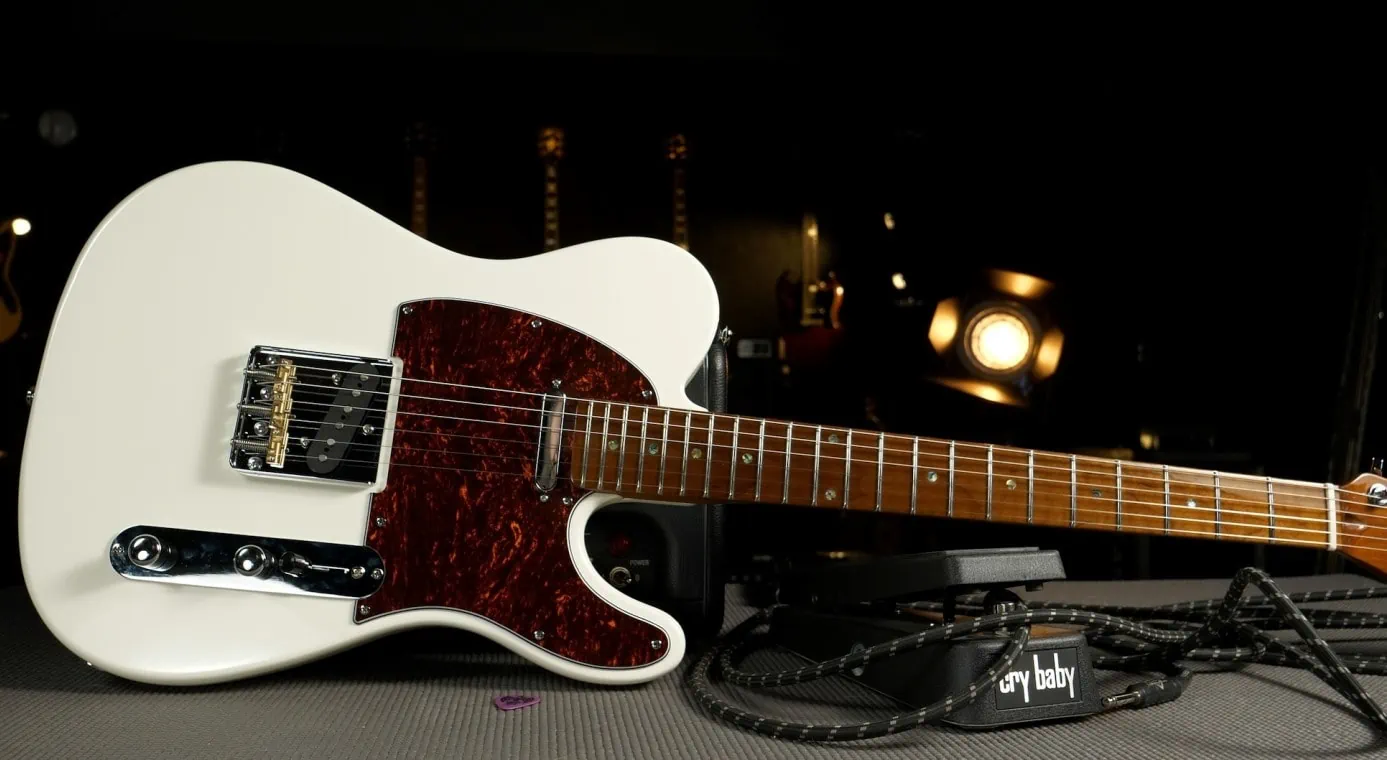
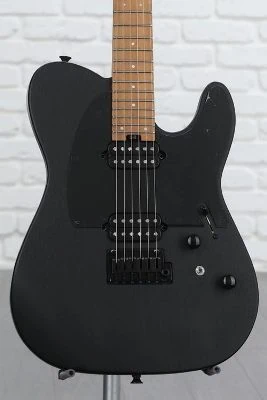
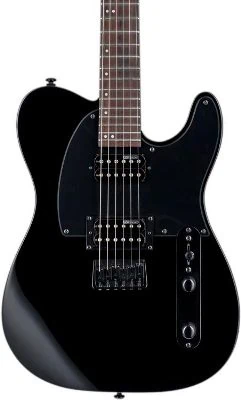
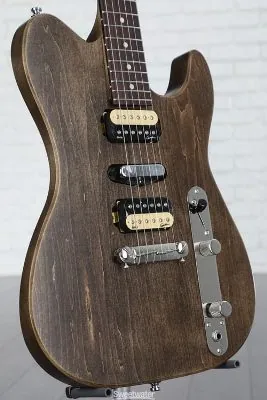

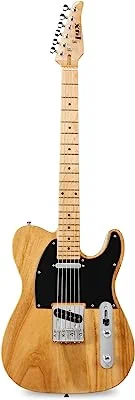
I have one of the older lefty LTD T-200’s. I bought it as just a kick around travel guitar but I’m impressed as well. Yes I’m a metalhead. After taking the entire thing apart and rebuilding it (there were a few minor flaws like a bad tone pot and a couple of stripped screws) and replacing the pickups with a pair of Seymour Duncan Sentient / Pegasus combo holy hell did she sounds good. Mine has the mahogany body with maple fretboard.